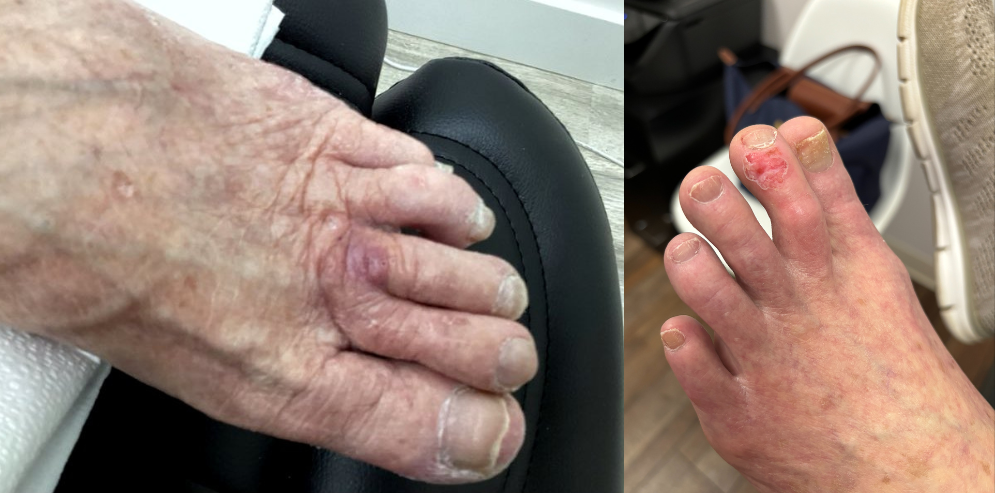
The moment you notice sunburn is when you should begin treating it. According to the CDC, the symptoms of sunburn usually begin around 4 hours after exposure, worsen within 24-36 hours, and resolve within 3-5 days. You’ll likely notice symptoms like red, warm, and tender skin, swelling, and blistering. Other symptoms, such as headache, fever, nausea, and fatigue may also be present. If you have sunburn, the first thing you should do is get out of the sun; get indoors and begin treating the affected area appropriately.
Tips to Relieve Sunburn Pain & Discomfort
Once you’re safely indoors, follow these tips to reduce the pain and prevent further damage to your skin:
- Bathe in Cool Water: Take a cool bath or shower, then softly pat your skin until it’s slightly damp. Apply moisturizer to lock in the moisture as much as possible.
- Choose the Right Moisturizer: When choosing a moisturizer, make sure it contains aloe vera or soy. These ingredients are particularly soothing on sunburned skin. If the area is especially sensitive, you may need a hydrocortisone cream. In any case, avoid products with benzocaine and other “-caine” ingredients, as they can cause an allergic reaction.
- Take a Pain Reliever: Ibuprofen, aspirin, or another over-the-counter (OTC) pain reliever can help soothe the pain and swelling. You can also use cold compresses to make your skin feel less hot to the touch.
- Stay Hydrated: Sunburn pulls fluid in your body to the surface of your skin. Make sure you drink lots of water to stay hydrated.
- Let Your Blisters Heal: Second-degree sunburns cause blistering. If you’re wondering how to treat a blistered sunburn, the answer is simple: Let the blisters heal on their own. It’s important that you don’t pick or pop the blisters because infection and/or scarring could develop.
- Cover Up: As your skin heals, take extra precautions when you’re outdoors. Cover the affected area fully to prevent further sun damage.
- Know When to Consult a Doctor: In some cases, medical attention is needed to treat a sunburn. See a doctor if your sunburn is severe with blisters that cover a large portion of your body, and/or if your sunburn is accompanied by a high fever, headache, severe pain, dehydration, confusion, nausea, or chills.
How to Treat Sunburn on Scalp
Any skin that’s exposed to UV light can burn, whether it’s the skin on your arms, legs, or scalp.
With too much exposure, skin cancer can develop on the scalp, as well as on the ears and neck. Sunburn on your scalp feels a lot like sunburn anywhere else on your body — hot to the touch, tender, or itchy. Your scalp will also be red and may have small, fluid-filled blisters. Again, avoid picking at the blisters; let them heal naturally. And, take the following steps to reduce irritation, pain, and swelling:
- Use cool water when bathing
- Avoid shampoos and conditioners with sulfates (also avoid dimethicone, as it can block pores)
- Dry your hair naturally (no blow dryers or flat irons)
- Avoid using hair care products, other than sulfate-free shampoo and conditioner
- Use cold compresses to soothe your scalp
- Use an OTC pain reliever
- Drink plenty of water
- Wear a hat and cover up when you go out
Get More Skin Care Tips from GentleCure
Preventing sunburn, as well as premature aging and skin cancers, starts with choosing the correct sunscreen and limiting your sun exposure. To learn more, reach out to our skin cancer information specialists by phone or online at your convenience.








